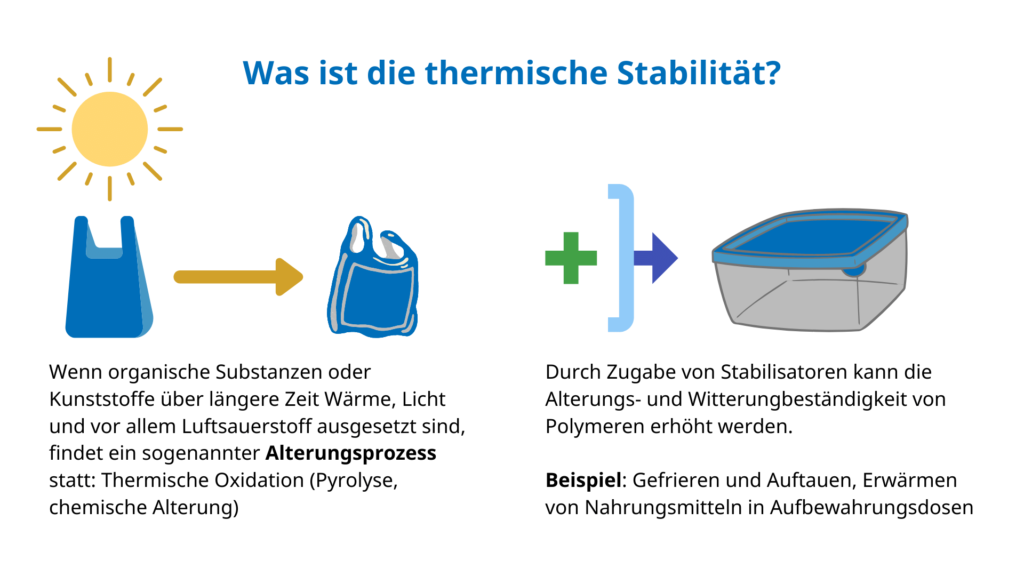Table of Contents
What is thermal stability?
A plastic is thermally stable if it does not decompose under the influence of temperature. The opposite of thermostability is thermolability.
When organic substances or plastics are exposed to heat, light and, above all, atmospheric oxygen over a longer period of time, a so-called ageing process takes place. In addition to the chemical properties, this process also affects the physical properties of a material. This is noticeable as follows: On the one hand, it is a slow oxidation of individual components, and on the other hand, some molecules are not stable in the long term and disintegrate after an unknown period of time.

Analyzing thermal stability with the OIT test
To investigate the thermal stability of such compounds, the “OIT test” is often used, where OIT stands for “Oxidation Induction Time”. In this test, the sample to be examined is brought to a temperature below the melting point in an inert atmosphere.
The atmosphere is then changed to oxygen or air and the calorimetric signal is measured. After a while, oxidation will occur, which normally manifests itself as an exothermic reaction and the sample temperature will rise slightly.
The corresponding reaction time can be read from this small increase and this gives the OIT time. A statement about the reaction rate and decomposition rate of the incipient oxidation can also be made using DSC if the data is evaluated with the associated software.
